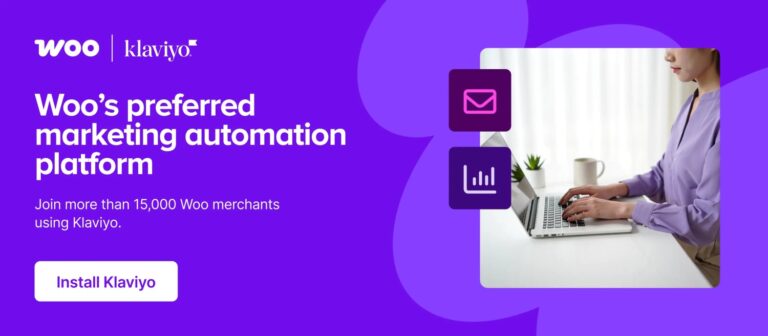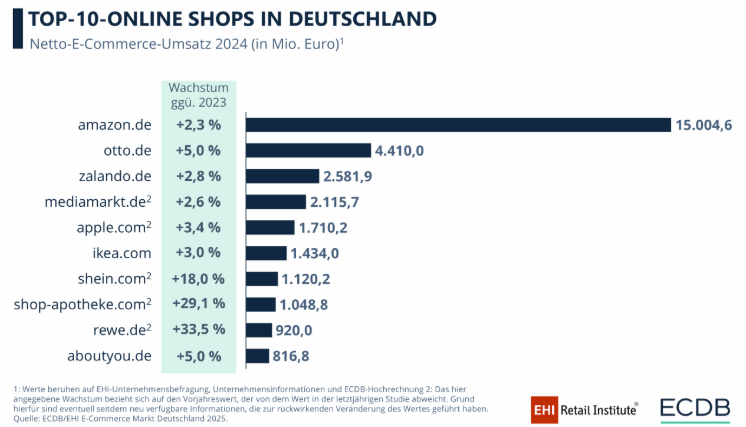It’s one of the most valuable marketing assets you can build. Email list growth and engagement represents one your most profitable and reliable sources of revenue. But many businesses, blogs, and other websites struggle to build their email lists or fail to make full use of this amazing asset.
Whether you want to build your first list or revive your previous efforts, there are proven steps you can follow. In this guide, you’ll learn how to build an email list from scratch.
We’ll also look at why email list building is so important, the challenges of growing email lists, the top marketing tools you can use, common misconceptions about email marketing, and the best strategies for growing your list and keeping more of your email subscribers engaged and happy.
There’s a lot to discuss because email list building is so important to your future success. It’s worth the effort. Let’s get started!
Whether you’re running an ecommerce store, a blog, or another type of online business, you can’t rely on your website visitors to just keep coming back on their own.
The simple truth is, to keep people engaged, you must have a way to reach them that you can control. You don’t have much control over social media algorithms, the future of cookies for remarketing, or even search engine rankings. But you can control how often you communicate with your email subscribers. But you must first have subscribers to communicate with.
When you build an email list, you are aiming to maximize your reach and your revenue. Here are three primary reasons why email works.
Multichannel marketing is more effective than single channel
Table of Contents
- 1 Multichannel marketing is more effective than single channel
- 2 Email has a low cost and high ROI
- 3 Email directly engages your customers and subscribers
- 4 Distracted audiences
- 5 Mistrust and uncertainty
- 6 Spam and scams
- 7 Privacy
- 8 Annoyance
- 9 Overwhelm
- 10 Email marketing software
- 11 Opt-in forms
- 12 Landing pages
- 13 Physical media
- 14 QR codes
- 15 Easy URLs
- 16 Email is dead
- 17 No one reads emails
- 18 There’s too much spam and too many emails
- 19 Become known, liked, and trusted
- 20 Have forms everywhere
- 21 Use a checkbox on the order page
- 22 Include a signup option on social media
- 23 Use lead magnets
- 24 Create a dedicated landing page for each campaign
- 25 Insert index cards in shipped packages
- 26 Have a signup campaign at your physical stores
- 27 Promote your list at trade shows and live events
- 28 Run contests
- 29 Use surveys and polls
- 30 Name your email list
- 31 Use a welcome series
- 32 Don’t sell them every day
- 33 Deliver a good mix of content
- 34 Entertain them
- 35 Treat them like a relationship, not a transaction
- 36 Find a good email frequency
- 37 Monitor opens and clicks
- 38 Reward them
- 39 Be exciting, fresh, and unpredictable
- 40 Share this:
- 41 Like this:
In marketing, it’s almost never a good idea to rely on a single method for attracting new customers and leads. Multiple streams of revenue, multiple channels for communication, and efforts to reach different audiences will result in a broader, more stable customer base.
Email will strengthen all of the channels you’re already using. It’s the easiest channel to use for follow-up and ongoing engagement. You might reach someone through your social media accounts, but how can you reach them again? How can you forge an actual business-customer relationship? With social media channels, ongoing personalized engagement is very difficult to do at scale.
But social media does work better than email for attracting leads. Email’s best strength is for follow up. You attract people through various other channels, and you follow up with them with email, SMS, and perhaps direct mail.
Email has a low cost and high ROI
Marketing always costs something, even if it’s just time. But email remains one of the lowest cost marketing channels, and will likely remain that way for the foreseeable future.
All you need is a few basic tools that we’ll talk about in a moment. One person can create marketing campaigns and manage the list for most small and mid-size businesses, and for blogs and other websites as well. And it doesn’t have to be their only job.
An inexpensive plan with an email service provider is all that’s needed to send plenty of emails for most small businesses. You don’t have to pay to ‘boost’ your emails. There’s no postage. No fee to use someone else’s media platform. You just write it, and send it to your list.
And because it’s such a low-cost media channel, it consistently earns a high return on investment. Different studies report different figures, but the fact is, if you put in the time to build an email list from scratch — and use it — you’ll reap the financial rewards.
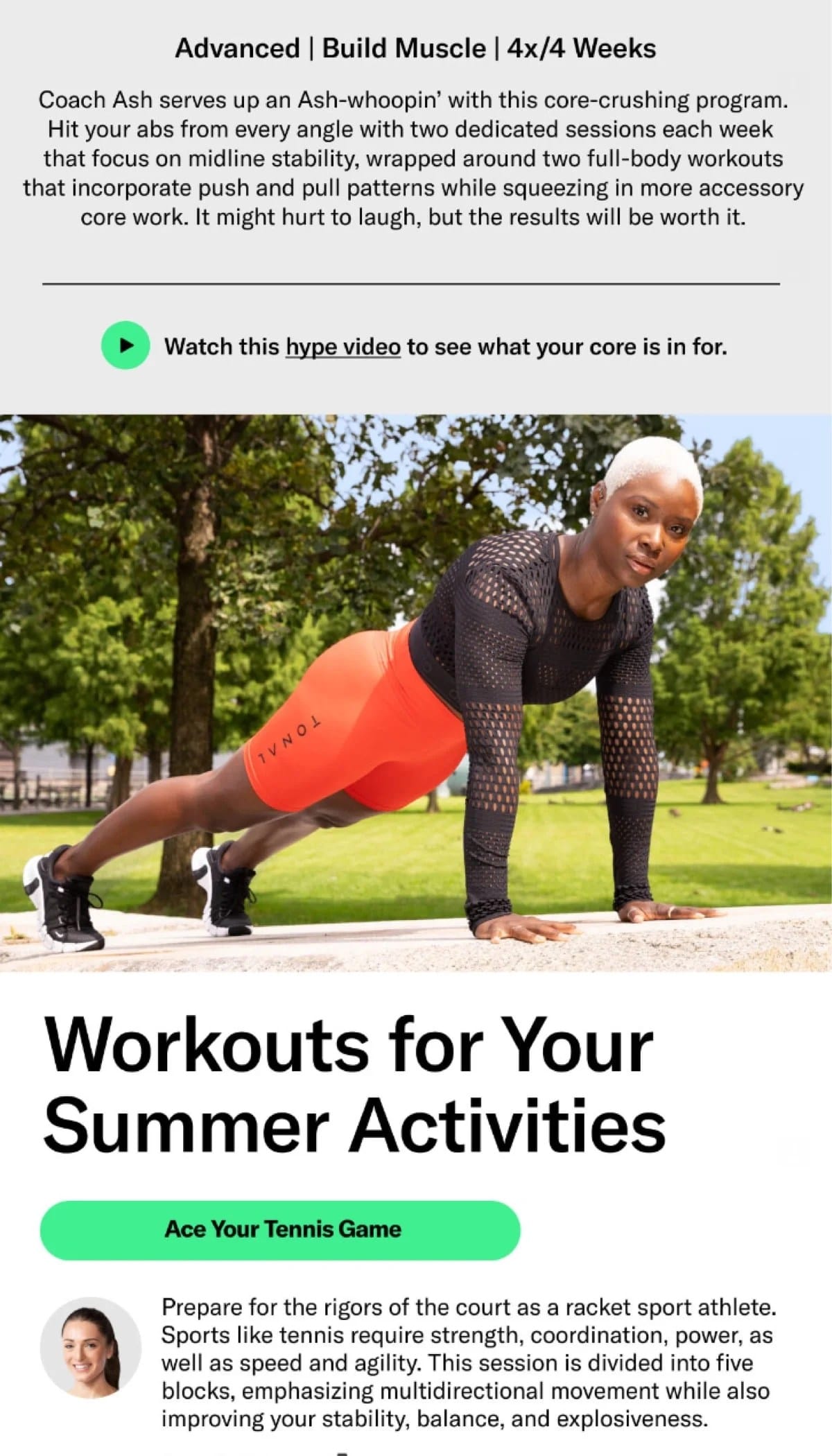
Email example from Tonal
Email directly engages your customers and subscribers
Email lets you speak directly to each customer and subscriber. It’s a personal letter. Each recipient can see your sender name and subject line, and then decide to open it or not.
And you have room to fill your email with whatever content you want to send:
- Text
- Images and graphics
- Videos
- GIFs
- Humor
- Helpful tips
- Links to a blog post or another page on your site
- Product promotions
- Special deals
- Personalized coupons and offers
- How-to content
- Surveys and polls
- Contests
- And anything else you can imagine
No other marketing channel offers this much versatility, combined with low cost, high ROI, and consistent levels of engagement.
Email list building has been a goal of businesses, bloggers, and marketers for decades. And the challenges to doing it well have actually increased. It is harder now than twenty years ago. But not that much harder. Here are the primary obstacles in your way:
Distracted audiences
Since smartphones and social media, distractions have only increased and made it harder to get and keep the attention of potential subscribers.
So many screens, offers, requests, calls to action, and marketing — not to mention people’s daily tasks — make it hard to break through the noise and get noticed, let alone motivate a response.
However, this is one reason to pursue email subscribers. Because once you get them, you now have a way to reach them, and sidestep many of those distractions.
Mistrust and uncertainty
People are more wary today than ever about what will happen when they join your email list. Are you going to send them emails every single day? Are you going to fill up their inbox with deals, offers, sales, and marketing?
When attracting new subscribers, you want to reassure them that you will not abuse the privilege of communicating with them via email. Let them know what to expect, and remind them they can unsubscribe at any time.
Spam and scams
The definition of spam has been somewhat distorted, and is in need of correction. Spam is not marketing. Spam is unwanted, unrequested email from often illegitimate sources. If someone fills out your email signup form, what you send them after that is not spam.
But people don’t always see it that way. And, real spam often gets rightfully associated with email scams. There are real risks to clicking on attachments and links from unethical email senders. So, more people today are rightfully nervous about emails from unknown senders.
That’s why, when you get new subscribers, you want to make sure they recognize you right away and get familiar with seeing your emails in their inbox. When they trust you, they won’t think of you as spam.
And the emerging array of anti-spam laws are making it easier to distinguish legitimate senders from the spammers. Make sure you follow those laws, and you’ll be in good shape.
Privacy
People are also worried about having their information shared without their consent. They don’t want you selling their email address to third parties. They want to protect their online information and identities.
You can reassure new subscribers by sharing your privacy policy and putting it in writing that you will never sell or share their information.
Annoyance
Other people are just annoyed. They’re sick of having stuff sent to them all the time, and they resist efforts to get them to join email lists. The thing is, these sorts of people probably won’t ever join your email list, and that’s fine. It’s not for everyone. You don’t need to worry about this one.
Except for one thing — pop-ups. Some people decry website pop-ups and consider them the most annoying aspect of visiting a site. The problem with this belief is that the data doesn’t support it.
Pop ups have been found to convert as high as 9.3%, and there are many other pop-up-related statistics that show how you can make pop up forms more effective and less annoying. The point is — this is not something to just reject because of the reputation of annoyance. How you use your pop up forms matters.
Overwhelm
Lastly, many people are overwhelmed with life. So much to do, things to read, bills to pay, appointments, repairs, food, clothes, shopping, kids, commitments — and, on top of that, they get dozens of emails every day.
Some subscribers join your list because they like something about your online business or website, but then they struggle to engage because they’re overwhelmed with life.
This is why multichannel marketing is better than relying on just one channel. You don’t need all your subscribers to see, open, and read every one of your emails. But by consistently showing up in their inboxes, they will see some of them. And that’s the goal — remaining relevant, visible, and memorable.
Here are the things you’ll need to facilitate ongoing email list growth.
Email marketing software
Email platforms make it possible to send large amounts of commercial emails, while remaining in compliance with anti-spam laws.
You cannot build and sustain an email marketing program using Google, Outlook, or other personal email services. When those services start noticing that you keep sending large batches of emails at once, they will start restricting your deliverability. Why? Because that’s not what those services were built to do, and they are fighting the presence of spam on their platforms. When you send large batches of emails, you look like a spammer.
Email marketing software is the tool for sending commercial emails. You’ve probably heard of many of the biggest names out there, and you regularly receive emails from businesses that use them, such as Klaviyo and MailPoet. The most reputable ones integrate with WooCommerce.
In addition to sending emails, your email marketing platform will enable you to capture email addresses and build an email list.
Some email marketing platforms offer far more capabilities than others, which is one reason for the price differences. AutomateWoo, for example, excels in its array of marketing automation for email campaigns such as abandoned cart emails, wishlist marketing, and card expiration notifications.
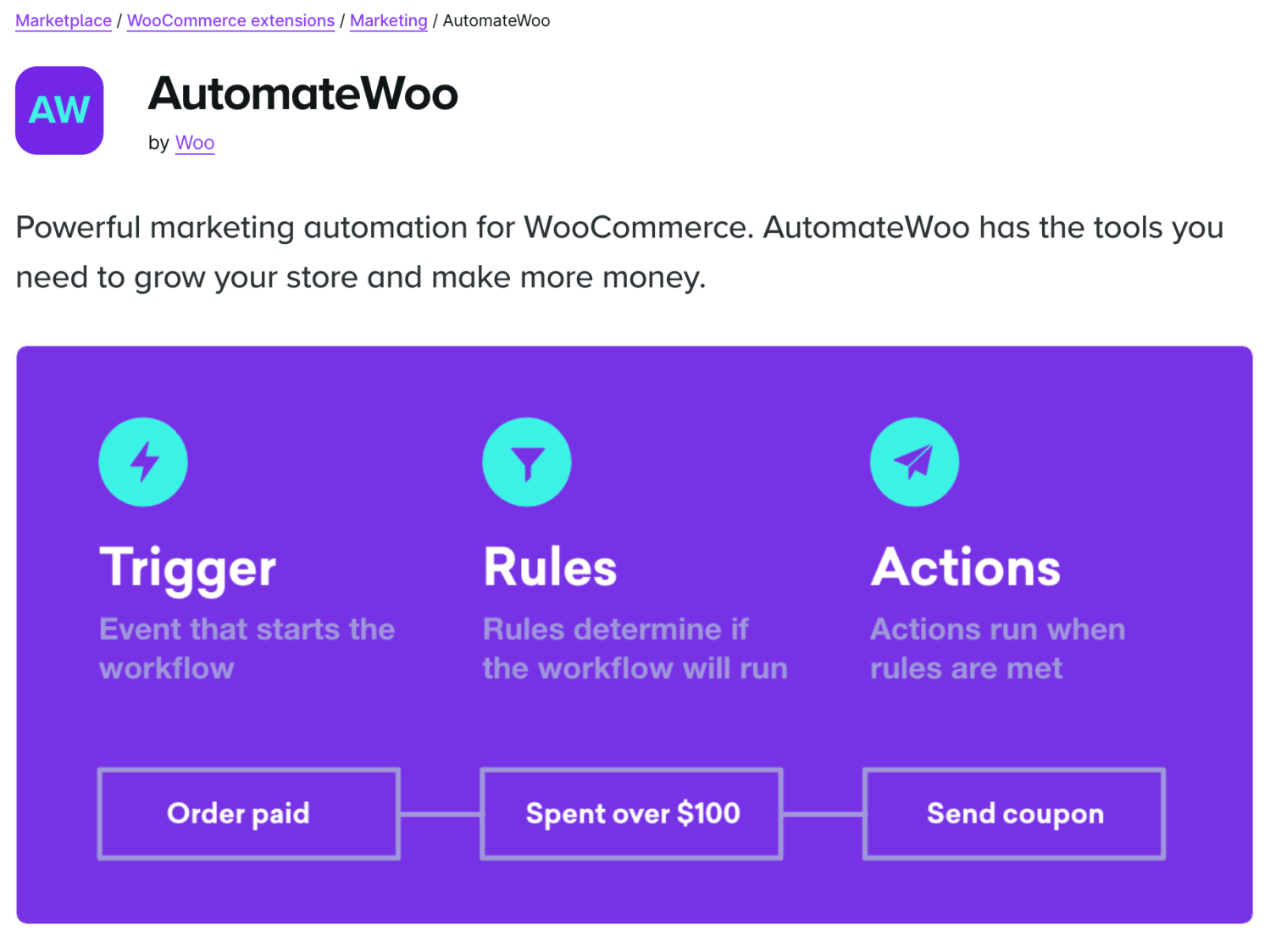
Opt-in forms
Unless you intend to add new subscribers manually — which in rare cases you may need to do — you’ll need signup forms. Any good email service provider should make this possible, though some do a better job of it than others at offering more customization and flexibility.
MailPoet, for example, lets you stylize and customize your opt-in forms for any location, purpose, or page on your site. They are GDPR-compliant. They have numerous integrations. And you can place them in your footer, in the sidebar, as a banner, a pop-up, inline form, or almost anywhere else on your site you’d like to see it.
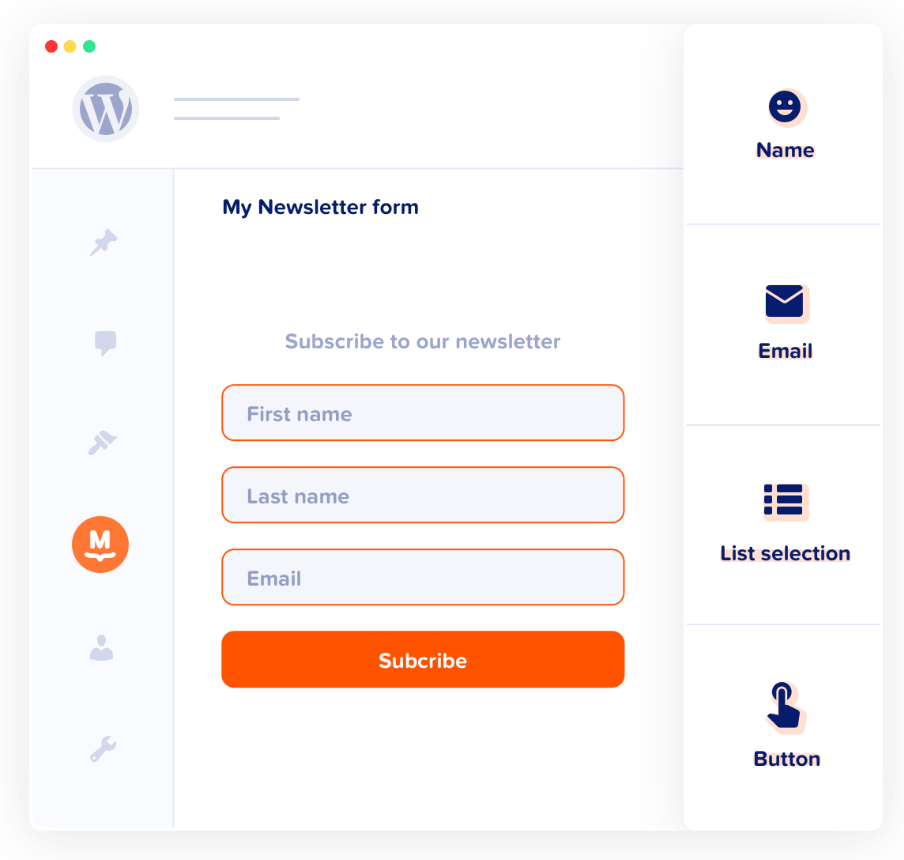
In addition to collecting the visitor’s email address, a standard opt-in form should include a checkbox where the subscriber can consent to receive marketing emails. This is one aspect of compliance with the various anti-spam laws.
Landing pages
You’ll want an array of landing pages for the various list building funnels you’ll have operating on behalf of your website. How does this work? Here’s an example:
Suppose you have a social media post for a particular platform that you intend to publish once a week. The post includes an offer and a call to action to join your email list. What happens when someone clicks the CTA button? Either they join your list right there, which is possible on some social media platforms, or they will be taken to your website.
But when they reach your website, you don’t want to just send them to your home page. There’s other valuable content there, and they may get distracted from the important reason they came to your site. You want them on your list, not browsing your site. Yes — email signups are more important. They may never visit your site again. This may be your one chance to capture them for follow-up marketing.
A landing page that is specific to whatever offer was made on that social media post will increase the conversion rate from those who reach your site. This special page can restate the same offer as the post. It can expand on the benefits of your lead generation magnet. It will explain the process and the perks for joining your list. And it will feature the opt-in form that allows them to subscribe.
With this approach, you can have different landing pages for every campaign you create to collect email addresses.
Doing a presentation at a live event? Have a landing page referencing that event.
Running a booth at a trade show? Have a landing page referencing the event.
Doing a PPC campaign offering a lead magnet? Dedicated landing page.
Each time you create a new pathway for people to join your list, you can have a different landing page that restates and expands on the language and details related to that marketing funnel.
Physical media
You may also need some physical media assets that make it easy to collect emails.
This could include brochures, one-sheet flyers, index cards, and even business cards. Each physical media asset can include the details for why and how to join your list.
QR codes
QR codes make it easier for someone with a phone who is interacting with your physical media to join your email list. All your brochures, cards, and mailed marketing assets that pitch your email list can include a QR code.
When someone scans it, the code can take them straight to a landing page with an opt-in form to join your list. It’s the fastest, most barrier-free way for collecting email addresses from anyone who isn’t already on your website.
Easy URLs
Lastly, for all your list building landing pages, you’ll want to try to stick to simple URLs. If you ever print the URL on physical media, display it on a slide, or even share it in a post, space is probably limited.
Plus, shorter URLs are just easier to remember.
Ideally, you want your list building landing pages to be something simple enough to remember and state verbally.
For example, website.com/freecoupon is a lot easier to display and remember than website.com/email-list-join-campaign.
Again, think of a trade show situation, or an elevator pitch. Can you remember the URL in those situations? Then it’s a good URL.
Before we get to email list building strategies, there’s one more topic worth addressing.
Some online businesses have misconceptions about email that prevent them from pursuing it. And this keeps them from experiencing the benefits of a well-run email program. Here are three of the most common ones:
Email is dead
As digital marketing, social media, smartphones, and the internet continue to become more and more common in everyday life, there is a never-ending stream of new technology and shiny objects promising to be ‘the solution’ to engaging potential customers and subscribers.
As that happens, you’ll occasionally hear people say that email is dead.
But email is not dead. You can find all the stats you want if you feel like searching for them. But open rates continue to hover between 15-35% for various industries — sometimes higher for well-curated email lists. Response keeps happening. People click. People buy. People engage.
Email works. The people who say it’s dead usually say that because they don’t personally use email, and they assume that means no one else does either. And, they are wrong.
Billions of emails get sent and read every year.
No one reads emails
A similar objection you’ll hear is that sure, emails get sent, but no one reads them. With Google filtering emails into promotional and spam folders, and other mailbox providers sometimes using similar tactics, it’s true that some emails never get read.
But any ecommerce website or other online business using email effectively will have the numbers to show you that it does in fact work, and people do read them. No one reads every email they get. But you don’t need them to do that in order to stay engaged and even make purchases through your email marketing campaigns.
Most ecommerce business owners who have been doing email for a while can tell stories of subscribers who were on their list for years, never once buying anything, and then all of a sudden making a big purchase. It cost you almost nothing to keep that person on your list that whole time. When they finally buy, your efforts have paid off.
There’s too much spam and too many emails
There is some truth to this one. Some people get over a hundred emails every day. Some get several hundred. There’s no way to possibly read them all. And that doesn’t even count the spam.
The interesting thing about spam is that mailbox providers have actually gotten pretty good at spotting it. Actual spam, that is. Real spam — unsolicited emails from senders who do not have consent or permission to send to you. That’s spam. Modern technology continues to improve at spotting, filtering, and, in some cases, quarantining spam so that you don’t even see it. It never even makes it to your spam folder. It gets blocked and goes undelivered.
This is happening, and the result is, some people’s inboxes are actually much less cluttered than they otherwise would be.
But still, with all the lists people get on, some people do receive a lot of emails. What’s your response? Two things:
1. Keep sending consistent emails
By showing up consistently — even if subscribers don’t click on most of your emails — they’ll see your sender name and will remember you. This is critical, because when they have a need that you can meet, they will think of you first, rather than going to search randomly online. Being memorable means they remember you.
This is why you shouldn’t just send one email per month, or even less. Send email campaigns consistently enough that they will see and recognize you in their inbox.
2. Use good subject lines
Don’t be bland or boring. Don’t blend in with the rest. Use a variety of subject lines. Use humor. Use intrigue. Use curiosity. Use urgency. Be practical. Be helpful. Be clear. Be mysterious.
Don’t use just one strategy for subject lines. Use all the strategies. Because even if people don’t open every email, they will see your sender name and subject line. Your subject line is your marketing at that moment. Make it count, even if that’s all they see.
Alright, we’re here. Let’s get to the strategies you can use to build an email list from scratch and motivate them to subscribe.
Become known, liked, and trusted
This is number one for a reason. All the ideas below this one are good, but can be arranged in any order. But this one — this list building strategy sits above them all. The reason is simple:
When you have prospects, leads, site visitors, and followers who love your content, products, values, beliefs, interests, or whatever else drew them to you — they will want to sign up for your email list. They’re not signing up because you had a great offer, good signup forms, or a pop up form. They’re doing it because it’s you.
They find you compelling, useful, helpful, honest, funny, or likable for some other reason, and they want to associate with you.
When you can build your business or website around your own personal brand identity and for your target audience, you’ll build an email list with far less effort. Succeed in that, and you win.
Beyond that, here’s the rest of the email list building tactics.
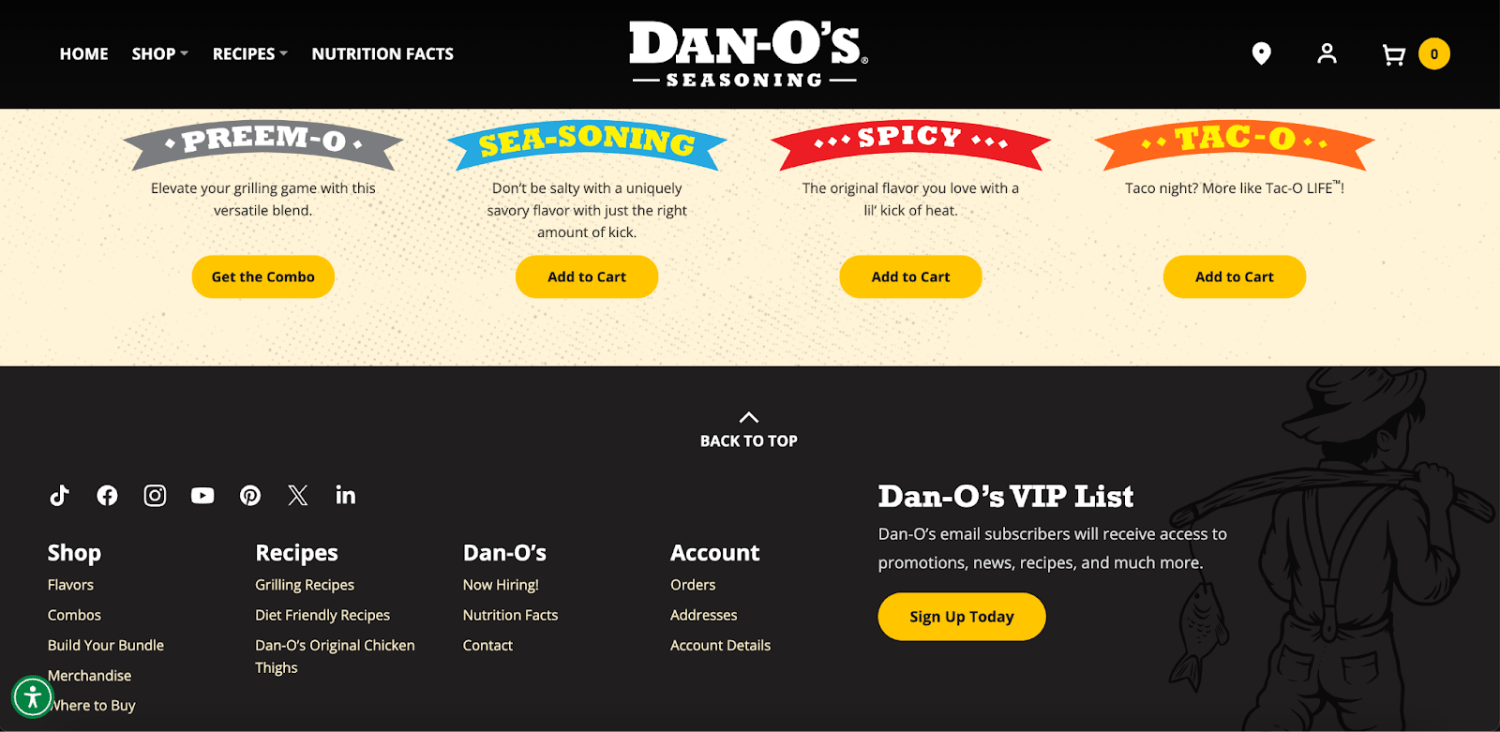
Have forms everywhere
Too many websites make the tragic mistake of assuming every visitor will find the one signup form buried somewhere on their site. They don’t want it on the home page, because it’s too “pushy.” They avoid using pop ups because they personally find them annoying. They resist putting a sign-up form in the middle of a blog post because readers might feel like it’s an ad and get annoyed.
It is an ad. You’re advertising your email list. And that’s the single best thing you can do for any site visitor, because they may never visit again.
You should have email signup forms all over your site. A few places to use them:
- Hero image
- Sidebar
- Footer
- Within content
- At the end of content
- Linked to within the text as a click-to-open feature or linked to a landing page
- Checkout page
- Thank you page
- As a pop up
- As an exit pop up
- On your list building landing pages
Website visitors who decide they like what they see and are open to joining your list should not have to look far to figure out how to do it. If they have to hunt for your form, then you need more signup forms.
Use a checkbox on the order page
Another great place to collect email addresses is on your checkout page. Why here? Because remember — you need to obtain consent before you can send email marketing to a consumer — even a customer. Just buying a product doesn’t imply consent to receive emails.
It does allow you to send things like purchase notifications, receipts, and other automated transactional emails.
But for marketing, you must obtain consent. So, when people order from you, include a checkbox right on the order page giving them the option to sign up for your email newsletter.
Some social media channels make it possible for people to join your email list right from their platforms. If you have social media accounts on platforms that let you use a newsletter signup link, you should take full advantage of it. The platforms like it because they want people to stay on their platform. But it also works for you because you’re gaining a subscriber.
Use lead magnets
Lead magnets are offers given to entice people to join your email list. They’re the heart of lead generation, because it’s what you give subscribers in exchange. When you create lead magnets, you can offer items such as a free ebook, a new subscriber discount, or a free trial for a service or customer loyalty program.
Give them a reason to join. Reward them with something your ideal customer or target audience would want and find valuable or useful.
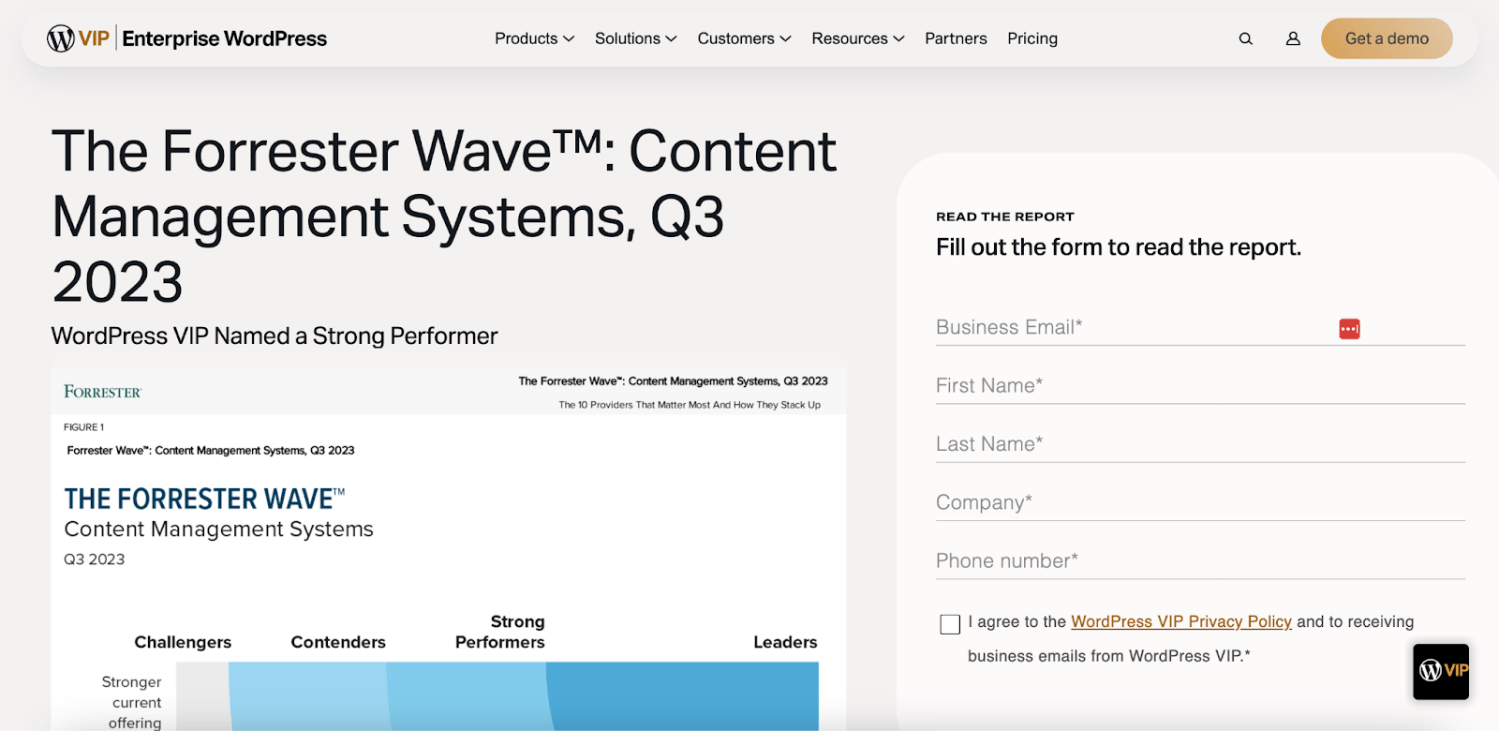
When you create landing pages, feature the lead magnet right on the page, and even in the opt-in form or pop up form. A landing page is a powerful tool when it also features a lead magnet.
Create a dedicated landing page for each campaign
As discussed earlier, create different landing pages for each email list building campaign. Each page can have its own lead magnet, offer, opt-in form, headline, call to action, benefits, and content.
One of the best reasons to do this is because you can track the results of all your various list building campaigns and know which ones are converting the most subscribers.
With that kind of data at your fingertips, you can ramp up the resources devoted to those campaigns, and win even more new subscribers.
Insert index cards in shipped packages
If you ever ship physical packages for any reason, include a simple index card or flyer promoting your email newsletter. As mentioned earlier, this card should have a QR code and an easy-to-remember URL where they can sign up for your list.
Have a signup campaign at your physical stores
Promote your campaign at physical stores, if that’s your business model. And don’t leave it to chance alone. Yes, you can have flyers, plastic tents on the counter, banners or posters on the walls, and other passive reminders to join your list.
But you can also train your employees to promote your email list to each customer they encounter. Give them a little bonus for each successful conversion, and they’ll work much harder at it. Nothing is more effective than a personal invitation.
Promote your list at trade shows and live events
If you’re presenting at a live event, sell your email newsletter from the stage. Have a slide promoting it, and use a simple URL for the landing page associated with that event. Lots of people in the audience will sign up right there if you sell them on it.
And at trade shows, the people running your booth can do the same thing. In fact, this can be one of your primary goals for visiting trade shows. Not just to make sales on the spot, but to grow your email list so you can turn one event into a follow-up opportunity that can last for years.
Run contests
Contests with good prizes will inspire many people to join your email list as long as they know the contest exists. Make the act of subscribing to your list the way to enter the contest, and every contestant will become a subscriber.
Use surveys and polls
Similar to contests but with lower stakes, surveys and polls offer another way to engage new prospects and leads. You can ask them to subscribe to see the results. Or, if you’re worried that might put some people off, then just pitch the email list as part of the survey, or at the end of it.
Name your email list
What’s more exciting:
A: Join our email newsletter!
B: Become a Superstar Member!
The first one is bland. The second one — especially when tailored to fit your business or website — injects some brand identity, fun, and belonging into your email list. This isn’t just another email list. It’s a special channel for people just like you who want whatever that target audience wants.
Naming your list gives you more distinction from all your competitors.
It’s one thing to subscribe to an email list. It’s another thing to stick around, engage and participate, and stay subscribed for months and years to come.
If you really want to financially benefit from your email marketing efforts, you need your new subscribers to stay with you for more than a few weeks. And again — this means engagement, not just remaining subscribed. Inactive subscribers aren’t much different than people who have unsubscribed, except the inactive ones bring down your open rates and engagement metrics.
Here are some email marketing strategies to keep your new subscribers active, engaged, and enjoying your email content.
Use a welcome series
This is job one. When someone joins your email list, they expect to receive an email from you — right away. But you want to send them more than an auto-generated welcome email.
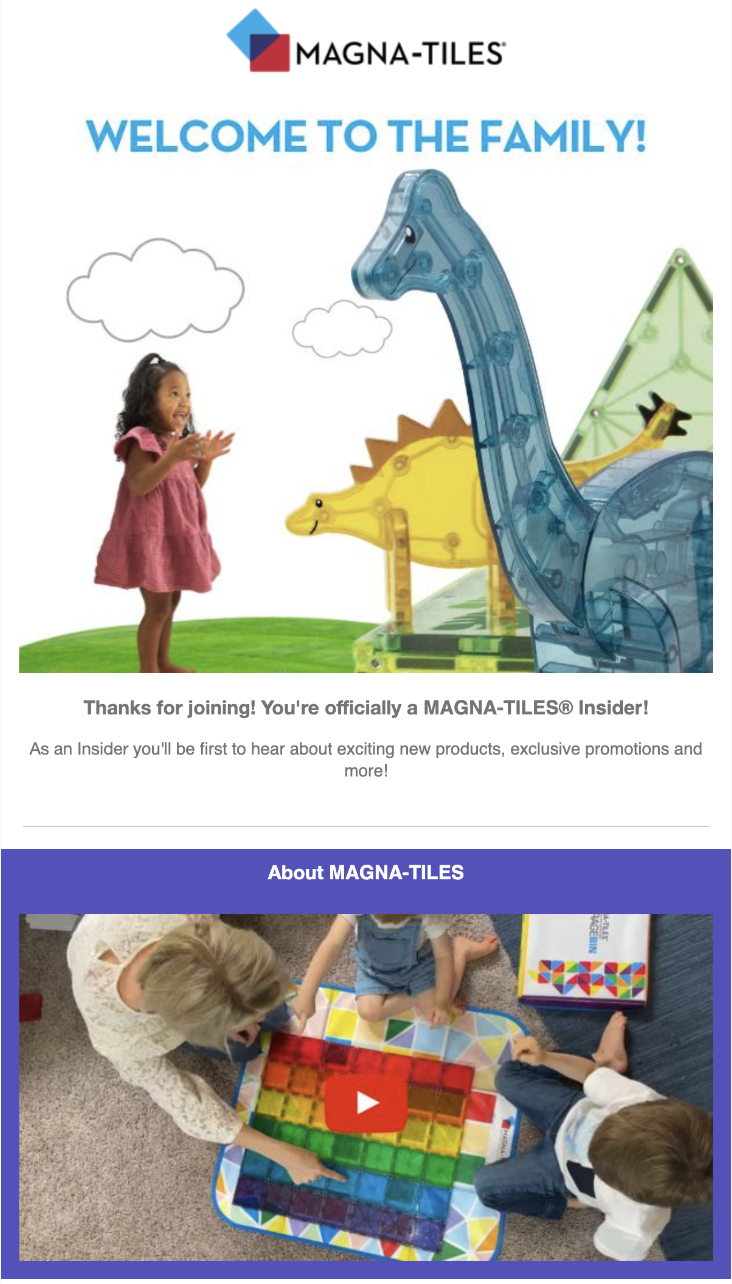
Take time to create a real welcome email. Make them excited to have joined your list. If you have a lead magnet, give it to them. And a welcome series is even better than a single welcome email.
Why?
Remember all those challenges and objections to email? By sending out a three, five, or seven-email welcome series over the first few weeks after a new subscriber joins, you’re making sure to insert your sender name into their memory so they recognize you from that point on.
You’re also making a good first impression, selling the benefits of being on your list, and becoming more known, liked, and trusted. All of this has immense value for your long-term revenue prospects if you do this for each new subscriber. And again, automating a welcome series is easy with something like MailPoet or AutomateWoo.
Don’t sell them every day
Another worry people have when joining an email list is that they’ll be bombarded with sales emails. This is an easy one to defray. All you have to do is, not do that.
Avoid making every email a sales email, and avoid selling them something every day, and they’ll feel better about joining your list.
Deliver a good mix of content
Instead of selling with every email, learn to create other types of email content. Your email newsletter is essentially your own media channel. So, treat it like one.
Produce a variety of content. No one will read it all or even probably like it all. But as long as the majority of subscribers enjoy a good share of it, they will remain engaged, and they won’t mind your occasional sales emails and special offers.
Here are some types of content you can send:
- Success stories
- New customers featured
- How-to content
- Common problems with solutions
- Promotions of blog content
- Offers for valuable exclusive content like a free eBook, PDF, or special report
- Images, graphics, and GIFs
- Videos
- New product announcements
- Limited time offers and specials
- Personalized messages based on previous actions taken, such as prior purchases
- Segmented content for subscribers with particular interests
- Surveys, polls, contests
The more emails you send, the better you’ll get at it. Or, you can hire it out or have an employee do it.
Entertain them
Humor is a great equalizer. It breaks down barriers and mental resistance. Make them laugh, and you’ll disarm their uncertainty about joining your list. If you can get some humor into your welcome email series, that will pay big dividends.
But don’t stop there. Find a way to get humor into your emails now and then. And not just humor. People like to be surprised, shocked, amazed, inspired, and emotionally touched.
Entertainment is more memorable than education.
Make your email entertaining, and your subscribers will stay active and involved.
Treat them like a relationship, not a transaction
This kind of sums up everything we’re saying. Your email subscribers don’t want to feel like numbers in a database. They want to feel important, valued, and respected. If they write something in response to an email, make sure they get a response!
The personal connection from two-way communication is so valuable, just like with any relationship. Send emails you yourself wouldn’t mind receiving. Be helpful, useful, and real.
Find a good email frequency
This is a tough one, because different businesses and websites have succeeded with vastly different email frequencies. Some businesses send email every day. They wouldn’t be doing that if everyone was unsubscribing. So, that means their subscribers don’t mind.
Others send once a week or even less, and they still bring in the revenue.
And just to underscore this point, some websites only send one email per month. And when people unsubscribe, some of them say their reason for leaving is because the website “sends too many emails.” With one per month. So, people unsubscribe for all sorts of reasons, and often they don’t even know why they’re leaving. And that’s fine. Unsubscribes are nothing to fear, because if they were going to buy, they wouldn’t have left.
As you get into your email marketing rhythms, find a cadence that works well. It has to work for you, and for your subscribers. Big changes are not advisable. So if you can manage one per week, and your email subscribers seem happy and responsive, then stick with that. OR, maybe you’ll try to bump it up to twice a week. If you notice your opens and clicks going down, or you get more complaints, pull back to once per week again.
Monitor opens and clicks
Off the last point, pay attention to your open rates and click rates. Not every email will be the same, but if you notice these declining over an extended period, that’s an indication you’re losing some engagement, and that something needs to change.
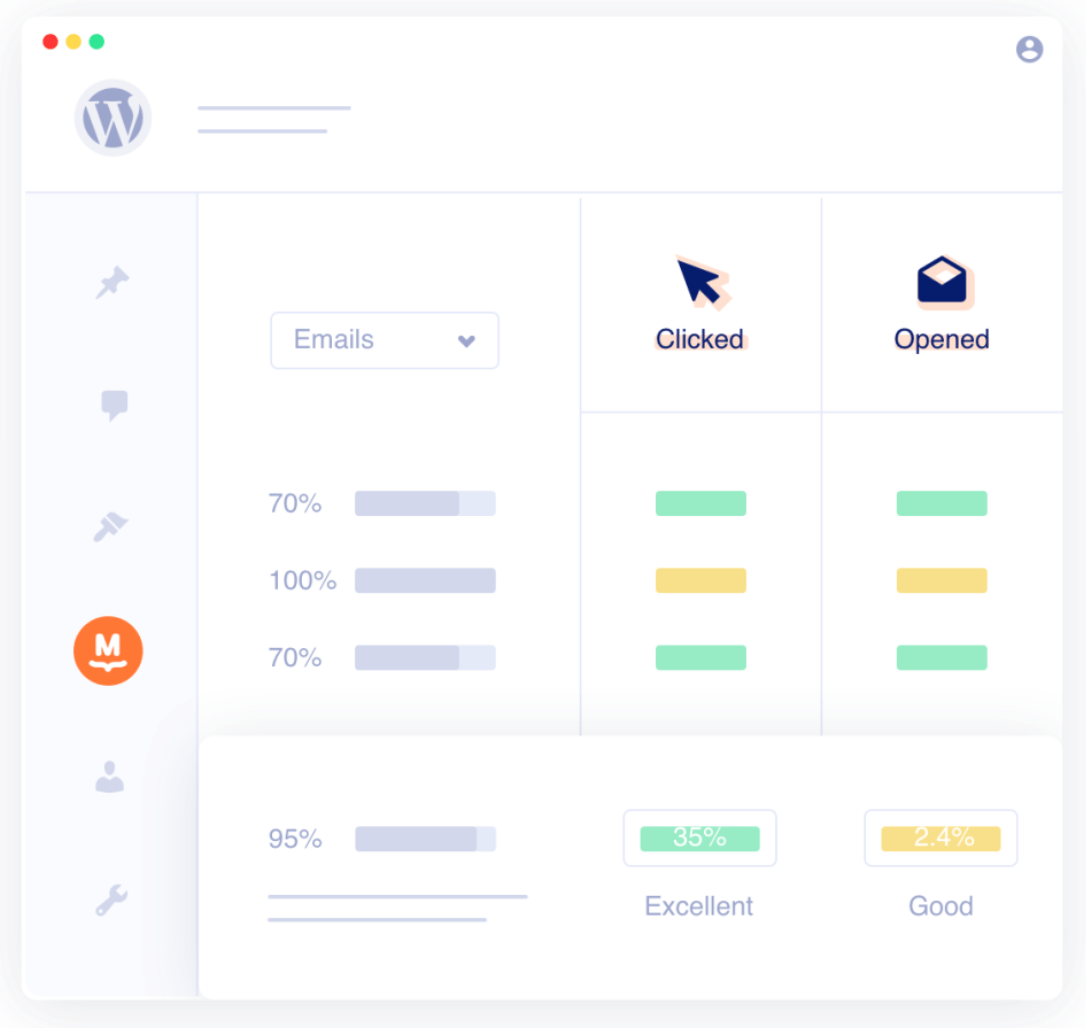
What matters most is revenue — if that’s your reason for having an email list. So if your revenue remains strong but your opens are declining, that might not matter. But, an engaged list is preferable, so keep on top of your engagement metrics.
Reward them
If you have a customer loyalty program, make your email list a central part of it. Send out special deals, exclusive discounts, announcements, and opportunities via email and nowhere else.
Use email to start a referral program. There’s nothing better than getting paid to be a customer, and if you can get a referral program going, that’s now two layers of benefits you’ll be getting from your email list — the original paying customer, and the ones they refer.
Be exciting, fresh, and unpredictable
This is another catch-all recommendation. Don’t fall into a rut. Continue to look for new things to say and talk about. Keep it fresh.
If you run dry on ideas, ask your subscribers for content. Have them take pictures of themselves with your product, or write reviews, or send in something silly. Run a poll or a survey.
The key is — keep sending. Keep sending consistently. Mix up your content. Be entertaining and not boring. And keep attracting new subscribers, because no matter what you do, people will always come and go. As long as you have more people coming than going, your list will grow, and your revenue should grow with it.
If you’re ready to build an email list from scratch, or if you have one already but you have neglected it or want to ramp up your efforts, you’ll need a great email software platform.
Again, there are many great ones out there, many of which integrate with WooCommerce. Our preferred marketing automation (and email!) platform for WooCommerce stores is Klaviyo. But if you’re looking for a beginner solution, two of the best are MailPoet and AutomateWoo. Of the two, MailPoet is the simpler one with fewer features, and AutomateWoo has more advanced capabilities in addition to the basics.
Happy sending!
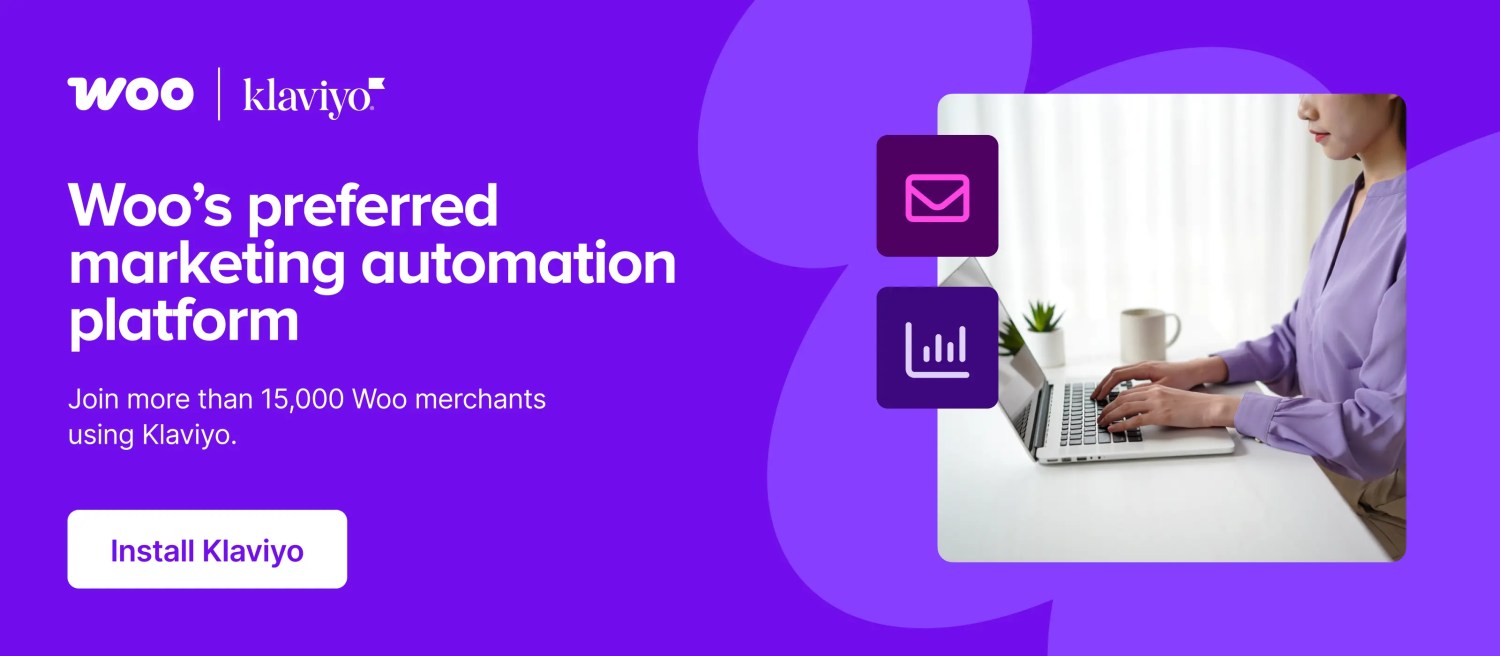
About
Kathryn Marr

